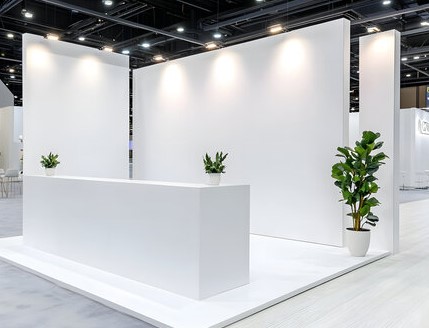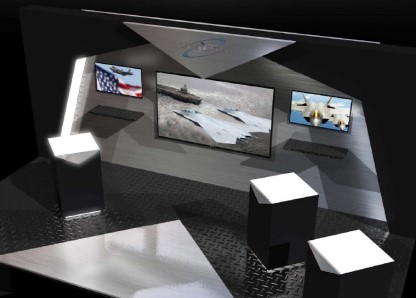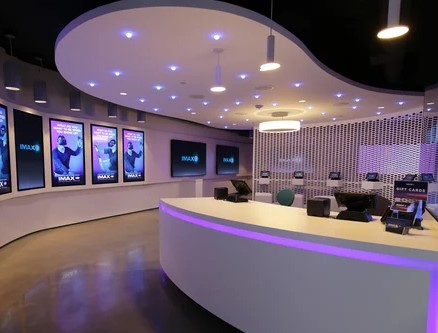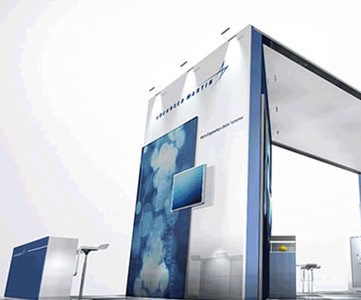In a sea of competitors vying for attention, the most successful trade show booths are those that do more than just showcase products—they immerse visitors in interactive learning experiences. Transforming your trade show booth into an educational hub not only increases foot traffic but also fosters meaningful interactions, strengthens brand authority, and enhances the likelihood of conversions. This article explores actionable strategies to make your trade show booth an interactive hub for learning.
1. Understand Your Audience’s Learning Needs
The first step in creating an interactive and educational booth is understanding your audience. Trade show attendees are diverse—they include industry professionals, potential clients, partners, and curious observers. Each segment comes with unique learning needs:
- Industry Professionals: They often look for advanced knowledge, insights into trends, and practical solutions to current challenges.
- Potential Clients: They want to understand how your products or services can solve their problems and deliver value.
- Curious Observers: They may be less familiar with your offerings but are open to learning through engaging experiences.
Tailoring your booth’s content and activities to these different segments ensures that everyone leaves with a meaningful takeaway. Conducting pre-show research, analyzing attendee demographics, and mapping common pain points can inform the type of educational content and interactive experiences you offer.
2. Incorporate Interactive Technology
Technology is the backbone of an engaging trade show experience. While static displays and pamphlets have their place, interactive technology can transform your booth from a passive exhibit into a learning hub.
a) Touchscreen Displays and Kiosks
Touchscreens and kiosks allow visitors to explore your offerings at their own pace. You can create intuitive interfaces with product demos, informational videos, and detailed specifications. By giving visitors control over what they explore, you increase engagement and retention of information.
b) Augmented Reality (AR) and Virtual Reality (VR)
AR and VR are increasingly popular at trade shows because they provide immersive, memorable experiences. For example, a furniture brand could allow visitors to use AR to see how products fit into their homes, while a tech company might use VR to simulate real-world applications of its software. These experiences turn learning into exploration and discovery, which is far more effective than passive observation.
c) Interactive Games and Quizzes
Gamification encourages participation while educating visitors about your brand or products. Simple games or quizzes with instant feedback can reinforce key messages. For instance, a cybersecurity firm might create a challenge where participants identify vulnerabilities in a virtual network, subtly teaching them the importance of robust security solutions.
3. Host Mini Workshops and Live Demonstrations
Educational booths thrive when they offer opportunities for hands-on learning. Hosting live demonstrations or mini workshops not only attracts crowds but also establishes your expertise in the industry.
a) Product Demonstrations
Demonstrations are particularly effective for products that benefit from visual explanation. For example, a kitchen appliance brand could offer live cooking demonstrations to show how their devices simplify meal preparation. During demonstrations, ensure you highlight the features, benefits, and real-world applications of the product.
b) Skill-Based Workshops
Workshops that teach attendees new skills or provide actionable insights can leave a lasting impression. For instance, a marketing software company could offer a 20-minute session on crafting effective social media campaigns using their platform. This hands-on approach encourages deeper engagement and helps attendees see tangible benefits.
c) Q&A Sessions
Interactive Q&A sessions allow visitors to ask questions directly to experts, turning passive observation into active learning. Make sure your staff is well-trained and able to answer questions thoroughly while maintaining enthusiasm and professionalism.
4. Use Storytelling to Engage and Educate
Storytelling is a powerful educational tool that helps your audience relate to your brand on a personal level. Rather than bombarding visitors with technical details, craft narratives that demonstrate how your products or services solve real-world problems.
- Customer Success Stories: Share anecdotes or case studies highlighting how clients achieved measurable results using your solutions.
- Behind-the-Scenes Narratives: Offer insights into your company’s innovation process or manufacturing techniques to foster appreciation for your expertise.
- Interactive Story Paths: Using interactive screens, allow visitors to choose different “paths” through a story, such as exploring solutions for different industry challenges.
When storytelling is paired with visual aids and interactive elements, it enhances retention and makes learning both enjoyable and memorable.
5. Encourage Participation and Collaboration
An educational booth should invite visitors to actively participate rather than remain passive observers. The more hands-on the experience, the more likely attendees will remember your brand and the lessons they learned.
a) Collaborative Activities
Create group challenges or collaborative projects that require attendees to work together. For example, a construction equipment company could set up a small-scale building challenge using miniature models, demonstrating the practicality and efficiency of their tools while fostering teamwork.
b) Feedback and Polling Stations
Interactive polling stations allow visitors to share opinions and instantly see how their responses compare to others. This not only engages the audience but also provides valuable insights about market trends and visitor preferences.
c) Social Learning
Encourage attendees to share their experiences on social media using branded hashtags or in-booth photo opportunities. Peer-to-peer sharing reinforces learning, spreads brand awareness, and creates a sense of community.
6. Provide Multi-Sensory Learning Experiences
Effective learning engages multiple senses, making the experience more immersive and memorable. A multi-sensory booth design can include:
- Visuals: Dynamic screens, infographics, and videos.
- Audio: Clear narration, ambient sounds, or podcasts explaining complex concepts.
- Touch: Product samples, tactile displays, or interactive panels.
- Smell and Taste: When relevant, such as food, beverage, or fragrance industries.
By creating an environment that stimulates sight, sound, touch, and even taste or smell, you cater to various learning preferences and leave a stronger impression on attendees.
7. Train Booth Staff to Facilitate Learning
Even the most interactive technology and well-designed activities will fall flat if your staff is unprepared. Your team should act as facilitators of learning rather than mere product promoters. This includes:
- Being Knowledgeable: Staff should have deep understanding of products, industry trends, and common challenges faced by attendees.
- Engaging Visitors: Encourage questions, guide exploration, and adapt explanations to individual learning styles.
- Creating a Welcoming Atmosphere: Friendly and approachable staff make visitors feel comfortable to participate, ask questions, and stay longer at the booth.
A well-trained team ensures that your educational efforts translate into meaningful interactions and lasting impressions.
8. Offer Takeaways That Extend Learning
Learning shouldn’t stop when attendees leave your booth. Providing thoughtful takeaways can reinforce the lessons learned and keep your brand top of mind.
- Digital Resources: E-books, whitepapers, or access to online courses related to your products or industry.
- Interactive Follow-Up Tools: Apps, AR experiences, or webinars that continue the learning journey.
- Practical Merchandise: Branded items that are functional and tied to the educational theme, such as measurement tools for a construction company or recipe cards for a culinary brand.
These takeaways extend engagement beyond the trade show floor and encourage attendees to continue interacting with your brand.
9. Measure Success and Iterate
Finally, making your booth a hub for learning requires continuous improvement. Measuring the effectiveness of your interactive elements helps refine strategies for future events.
- Engagement Metrics: Track visitor numbers, dwell time, and participation rates in interactive activities.
- Feedback Surveys: Gather attendee feedback on learning experiences, clarity of information, and overall satisfaction.
- Lead Quality: Assess whether interactive learning experiences lead to higher-quality leads or conversions.
By analyzing these metrics, you can identify what resonates with your audience and enhance your booth’s educational impact over time.
Trade show booths are increasingly competitive, and a traditional static booth is no longer enough to stand out. By transforming your booth into an interactive hub for learning, you provide attendees with meaningful experiences that educate, engage, and inspire. From understanding your audience’s learning needs to leveraging technology, hosting workshops, and offering multi-sensory experiences, every element of your booth should aim to foster curiosity and knowledge. Well-trained staff, compelling storytelling, participatory activities, and thoughtful takeaways ensure that your booth leaves a lasting impression long after the event ends.
Ultimately, an educational trade show booth doesn’t just showcase products—it cultivates relationships, builds trust, and positions your brand as a thought leader. When attendees leave not only informed but also inspired, your trade show presence becomes a strategic investment with measurable long-term benefits.




